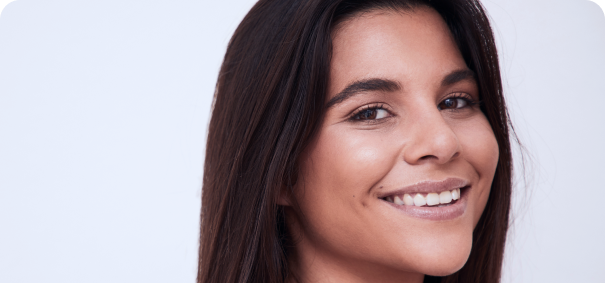Ethnic Rhinoplasty
Within the limited context of esthetic surgery, the word “Ethnic” refers to identifiable features that can be traced to a defined geographical area. Narrowing the discourse even further, “Ethnic Rhinoplasty (nose job)” becomes the act of changing an inherited nasal form in order to blur its source of origin.
Ethnic noses widely diverge in their anatomies. Some need “building up” as in the weak Equatorial noses; others need “deconstruction (building down)” as in the strong Eastern European/Asia Minor noses; others still need a totally different strategy as in the Oriental noses.


Let us have a tour of the different Ethnic noses are liable to show up in a rhinoplasty practice dealing with the issue:

The Far Eastern (Asian) nose
The essential feature of this nose is the lack of central support, from between the eyebrows to the tip, and its very short nasal bones. The particularly depressed interval between the eyes (Radix) make these latter appear too close together. This nose is the prime example of one in need of building up.

The Near Eastern/Middle Eastern nose
This is the archetypical “strong” nose, with its usually over-arching dorsum, absolutely fundamental for the support of heavy skin. This nose cries for deconstruction or what is known in the lingo as “reduction rhinoplasty.” However, this maneuver is fraught with problems if the “support beam” becomes too weak to support the fabric of the tent (skin).

The African/Equatorial nose
This challenging nose combines the weakness of support with the heaviness and excessive thickness of the skin, leading to the “buckling up” of certain anatomical features (nostrils). Whereas the Asian nose needs build-up support to re-create certain features, the African nose is in real need for substantial strengthening, not only to bolster functionality (breathing) but also to strain the envelope in order to create contour. This is a strange paradox that cannot be easily grasped by the general public: Making a nose look smaller by adding (rather than subtracting) to it!

The Central/South American (Mestizo) nose
This nose combines features of both the Oriental and Equatorial varieties and demands a healthy dose of respect in analyzing it. More often than not it requires elements of both deconstruction (shaving excess bone and cartilage) and reconstruction (adding cartilages in key areas) to alter form and function.
Rhinoplasty is more of a science and less of an art
As much as we would like to capture the public’s imagination with the often-quoted moniker of “Artistic Nose Job” it would poorly serve the community for noses to emerge from the operating room looking as if Pablo Picasso had applied his artistic license to them. Rhinoplasty is more of a science and less of an art. To satisfy the public’s hunger for poetic musings, we will call it the “Art of Being Scientific.” In other words, the surgeon should go to the operating room carrying more of his maps, compasses, rulers and protractors and less of his palette and brushes. Artistry has to be harnessed by Architecture.
Dr. Maher Anous, Ethnic Rhinoplasty Specialist
When it comes to a procedure as delicate as ethnic rhinoplasty, patients need to make sure they are working with a board certified plastic surgeon who is highly experienced, but also blessed with a strong sense of aesthetics. Maher M. Anous, M.D., F.A.C.S., is a widely respected, board certified plastic surgeon who has been lauded by his patients for his sensitivity, creativity, and medical skills. Patients praise him for his ability to successfully sculpt facial features so that they truly complement and flatter their appearance.
Dr. Anous has been performing reconstructive and plastic surgery since the 1990s; he has worked for decades in the Los Angeles Area and, prior to that, in Seattle, Washington. He has also taught at Texas’s prestigious Baylor College of Medicine and performed pro-bono procedures in the Balkans, Pakistan, and the Middle East.
Of course, patients are a great deal more than the representative of an ethnic group; everyone one of us is a unique individual. Dr. Anous always aims to create results that not only respect a patient’s ancestry, but also his or her individuality.


Getting Started with Beverly Hills Physicians
Our team at Beverly Hills Physicians offers the full range of health and beauty treatments designed to help patients look and feel their very best. We are proud of our team of outstanding plastic surgeons and other medical professionals. To get started, contact us today at the phone number above or request a consultation online.

